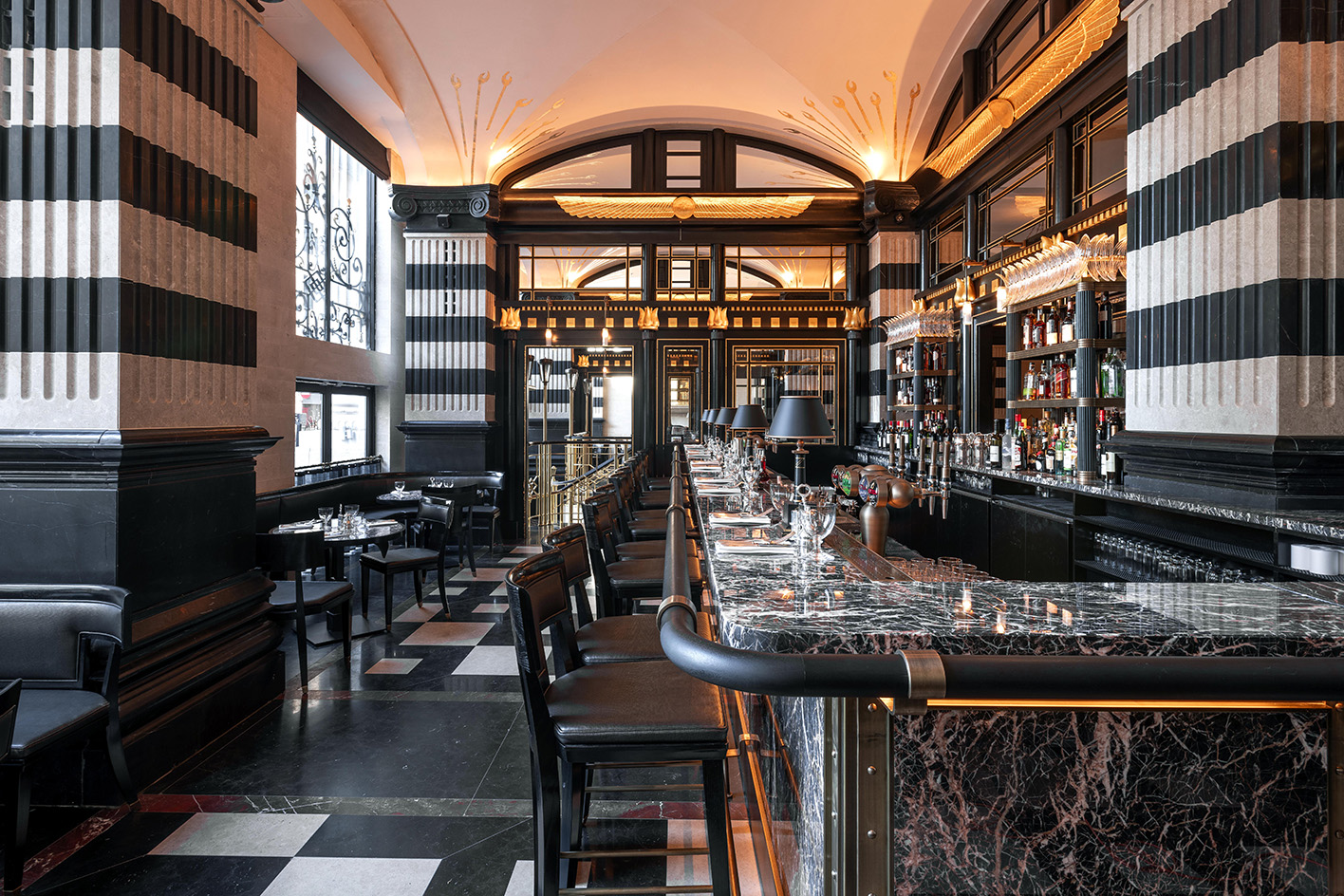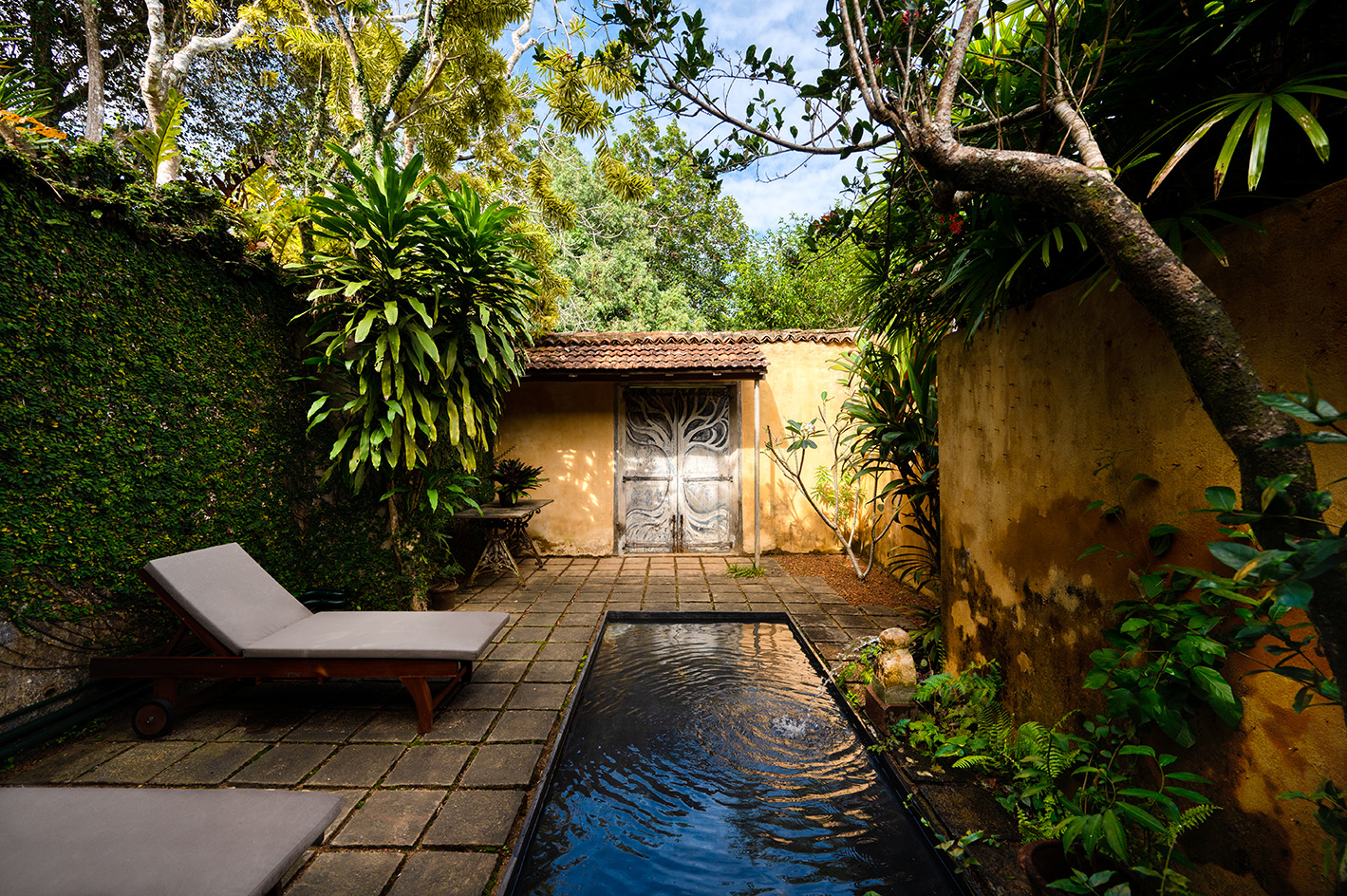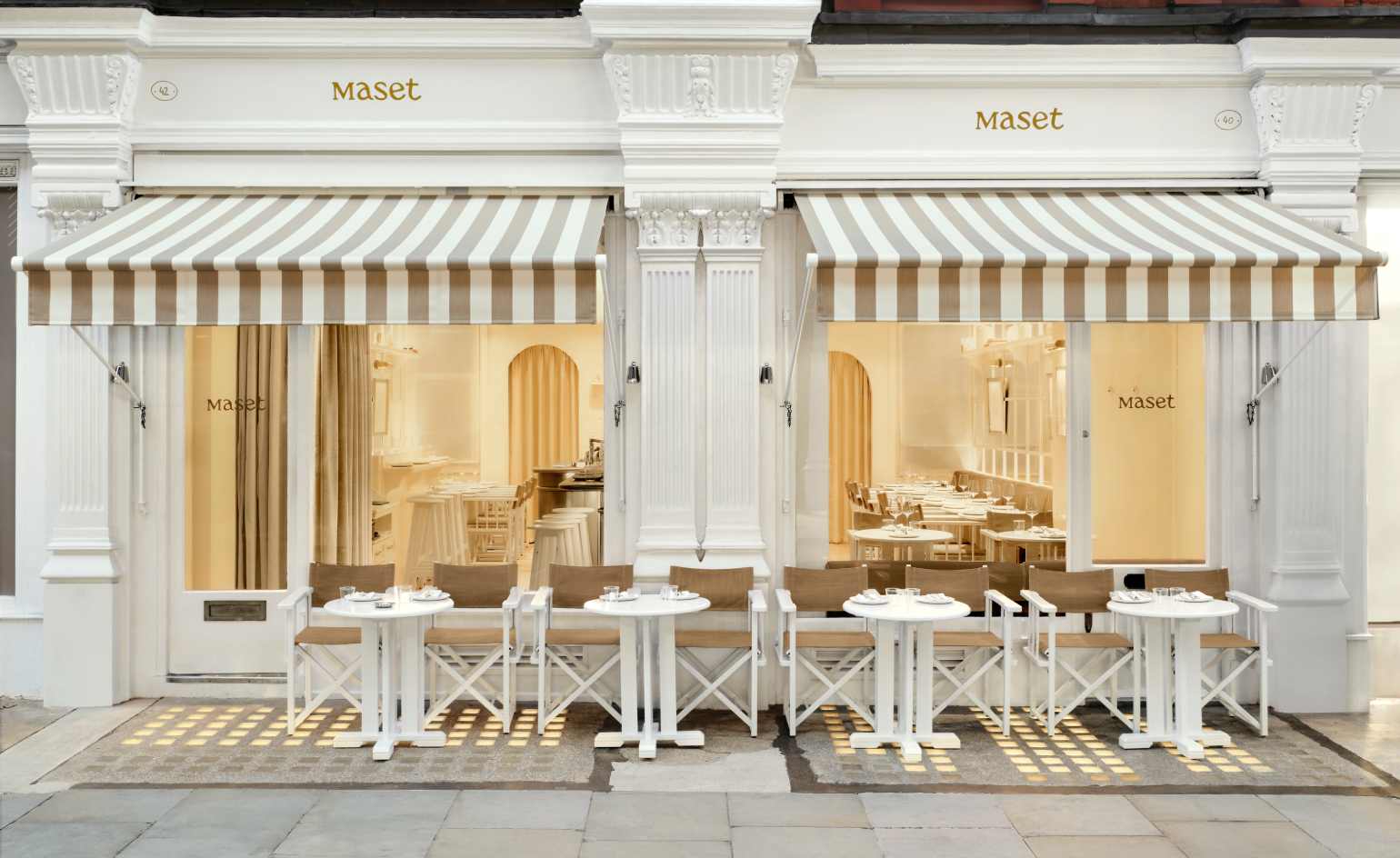The Wolseley City brings the brand’s 1920s glamour and identity to the 21st century
The Wolseley City opens to a design by Fabled Studio, bringing the celebrated hospitality brand from Piccadilly to the City of London

The Wolseley City is more than just the younger sibling of the famed The Wolseley on Piccadilly; this is the hospitality group’s new offering in the City of London that aims to recreate the 'Grand European Café' tradition for the 21st century. It was a welcome challenge for its designers, Fabled Studio, the practice behind expertly orchestrated interiors such as Manzi's in Soho and Harrod's Baccarat Bar; but one that its team responded to with aplomb, drawing parallels between the two venues, while carving out a distinct identity for the newcomer.

The Wolseley City: a new member to the brand's family
'Understanding the integrity and social currency of the original Wolseley restaurant was key for us, and we were fully aware of the expectation and calibre that was required to install a sibling of such a legendary establishment on the London restaurant scene. We were keen to understand the influence that inspired the original building, and use those references to form our own incarnation of the space – the design speaks of authenticity, relevance, heritage and reference to its parent – in no way a facsimile, but a member of the family in its own right,' says Fabled Studio's founder and director Steven Saunders.

‘We spent a lot of time immersing ourselves in the DNA of the original Wolseley, to understand its heritage and incarnation. We wanted to explore other design trends of the 1920s; whereas the Piccadilly site is layered with Far Eastern flourishes of Chinoiserie and Japan Lacquer, we explored the period of Egyptian Revival – inspired by Howard Carter’s discovery of Tutankhamun’s tomb in 1922 – to give a separate but relevant identity.'

In order to avoid creating a replica of the Piccadilly restaurant, the team used its colour palette of black, gold and cream, and applied it to The Wolseley City’s key features – such as its floor pattern, and vestibule screens, which are layered in Egyptian detailing. It's all encompassed within the space as soon as the visitor steps foot in the grand, double-height main space.
Everywhere, luxurious materials prevail. Marble is used throughout the interior, such as the Egyptian Brushed Limestone and Nero Marquina floor, trimmed with Red Jasper. There is hand-painted black lacquer and gold gilding work across the vestibule screen and furniture. 'We worked with many artisans to create these finishes and applications, and developed them to look aged and lived in – giving the interior its familiar warmth and soft feel,' Saunders says.

The menu responds to the same Grand European Café vibes – including its breakfast classics such as eggs, Bubble & Squeak, Grilled Kippers and Smoked Haddock Kedgeree. The all-day menu, spans a variety of meat, fish, shellfish and vegetable options that mix Welsh Rarebit, Chicken Soup with Matzo Dumplings, and Red Mullet. A selection of cocktails and traditional cakes and desserts (think, Battenburg and Crème Brûlée) bookend a meal.

As for Saunders' favourite part? 'For me, it has to be the iconic flooring design we created and the vestibule screens surrounding the bar and salon. Having the chance to create our own version of one of the most iconic floor patterns in London was a challenge we relished, and the vestibule screens are so layered in Egyptian detailing and add striking punctuation to the interior,' he says.
Receive our daily digest of inspiration, escapism and design stories from around the world direct to your inbox.
Ellie Stathaki is the Architecture & Environment Director at Wallpaper*. She trained as an architect at the Aristotle University of Thessaloniki in Greece and studied architectural history at the Bartlett in London. Now an established journalist, she has been a member of the Wallpaper* team since 2006, visiting buildings across the globe and interviewing leading architects such as Tadao Ando and Rem Koolhaas. Ellie has also taken part in judging panels, moderated events, curated shows and contributed in books, such as The Contemporary House (Thames & Hudson, 2018), Glenn Sestig Architecture Diary (2020) and House London (2022).
-
 Wallpaper* Design Awards: how David/Nicolas reimagined a 1990 Porsche 964 Targa
Wallpaper* Design Awards: how David/Nicolas reimagined a 1990 Porsche 964 TargaThe two-seater convertible Porsche was given a makeover by the designers, featuring an oiled teak handbrake, machined brass dials, and Connolly leather interiors
-
 Wallpaper* Architect Of The Year 2026: Marina Tabassum on a building that made her smile
Wallpaper* Architect Of The Year 2026: Marina Tabassum on a building that made her smileMarina Tabassum discusses Geoffrey Bawa’s Lunuganga, and more – as we asked our three Architects of the Year at the 2026 Wallpaper* Design Awards about a building that made them smile
-
 Cult accessory brand Déhanche unveils chunky hardware jewellery
Cult accessory brand Déhanche unveils chunky hardware jewelleryAfter three years of creating jewelled belt buckles, Déhanche jewellery joins our wish list
-
 The most anticipated hotel openings of 2026
The most anticipated hotel openings of 2026From landmark restorations to remote retreats, these are the hotel debuts shaping the year ahead
-
 The most stylish hotel debuts of 2025
The most stylish hotel debuts of 2025A Wallpaper* edit of this year’s defining hotel openings. Design-led stays to shape your next escape
-
 Neo-Gothic grandeur and decadent martinis await at Hawksmoor St Pancras
Neo-Gothic grandeur and decadent martinis await at Hawksmoor St PancrasThe dining room at the St Pancras London hotel has proved to be a revolving door for big-name chefs; now, it's Hawksmoor’s time to shine
-
 Form... and flavour? The best design-led restaurant debuts of 2025
Form... and flavour? The best design-led restaurant debuts of 2025A Wallpaper* edit of the restaurant interiors that shaped how we ate, gathered and lingered this year
-
 At last: a London hotel that’s great for groups and extended stays
At last: a London hotel that’s great for groups and extended staysThe July London Victoria, a new aparthotel concept just steps away from one of the city's busiest rail stations, is perfect for weekends and long-term visits alike
-
 French bistro restaurant Maset channels the ease of the Mediterranean in London
French bistro restaurant Maset channels the ease of the Mediterranean in LondonThis Marylebone restaurant is shaped by the coastal flavours, materials and rhythms of southern France
-
 Sir Devonshire Square is a new kind of hotel for the City of London
Sir Devonshire Square is a new kind of hotel for the City of LondonA Dutch hospitality group makes its London debut with a design-forward hotel offering a lighter, more playful take on the City’s usual formality
-
 This sculptural London seafood restaurant was shaped by ‘the emotions of the sea’
This sculptural London seafood restaurant was shaped by ‘the emotions of the sea’In Hanover Square, Mazarine pairs a bold, pearlescent interior with modern coastal cuisine led by ‘bistronomy’ pioneer chef Thierry Laborde